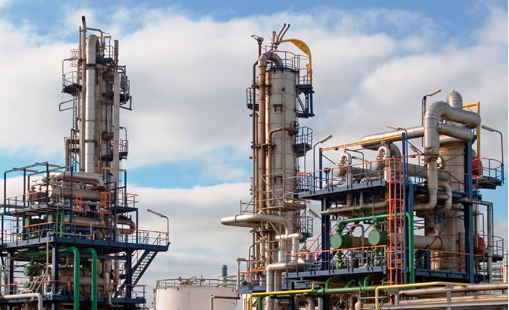Efficient Methods for Waste Oil Refining

The demand for sustainable energy solutions has led to increased interest in waste oil refining. This process transforms used and contaminated oil into valuable reusable products, reducing environmental pollution and promoting resource efficiency. Waste oil refining is widely used in industries to recycle lubricants, engine oil, and industrial fluids, preventing hazardous waste disposal and contributing to a circular economy. This article explores the importance, methods, benefits, and challenges of refining waste oil.
Understanding Waste Oil Refining
Waste oil refining refers to the process of treating and purifying used oil to remove contaminants, water, and impurities, converting it into reusable lubricants, fuels, or raw materials for industrial applications. Used oil is often contaminated with heavy metals, carbon deposits, and other harmful substances, making it unsuitable for direct reuse. Through refining, these contaminants are removed, restoring the oil’s usability.
Refining waste oil is a sustainable alternative to disposal methods such as incineration or landfilling, which can contribute to environmental pollution. With technological advancements, modern waste oil refining plants can achieve high levels of purity, producing refined oil that meets industry standards.
The Process of Waste Oil Refining
The waste oil refining process involves several stages to separate impurities and enhance the oil’s properties. The key steps include:
1. Pre-Treatment and Filtration
Before refining begins, the waste oil undergoes pre-treatment to remove large debris, sludge, and water. This step includes:
- Sedimentation: Allowing heavy particles to settle at the bottom.
- Filtration: Using mesh filters or centrifuges to separate solid contaminants.
- Dehydration: Removing water content through heating or chemical treatments.
2. Distillation
Distillation is a crucial step in waste oil refining where the oil is heated to different temperatures to separate its components based on boiling points.
- Vacuum Distillation: Conducted under low pressure to reduce boiling points and prevent thermal degradation.
- Fractional Distillation: Separates different oil fractions such as base oil, diesel, and light fuel.
3. Chemical Treatment
Chemical refining involves using acids, alkalis, or solvents to neutralize harmful compounds and enhance the oil’s properties.
- Acid Clay Treatment: Removes oxidation products and stabilizes the oil.
- Solvent Extraction: Uses chemical solvents to extract impurities selectively.
4. Hydrotreating
This process involves treating the refined oil with hydrogen under high pressure to remove sulfur, nitrogen, and other undesirable elements. Hydrotreating improves the oil’s stability, color, and odor, making it suitable for high-performance applications.
5. Blending and Additive Enhancement
After refining, additives such as antioxidants, detergents, and viscosity enhancers are added to improve the oil’s performance. The final product can be used as re-refined base oil, lubricants, or industrial fuel.
Types of Waste Oil Suitable for Refining
Waste oil comes from various sources, and each type requires specific refining techniques. Common categories include:
1. Used Engine Oil
Collected from vehicles and machinery, used engine oil contains metal particles, carbon deposits, and degraded additives. Refining this oil produces high-quality base oil for lubricant manufacturing.
2. Industrial Lubricants
Hydraulic oils, gear oils, and transformer oils used in factories and power plants can be refined to recover valuable hydrocarbons.
3. Cooking and Vegetable Oils
Waste cooking oil from restaurants and food industries can be refined into biodiesel, an eco-friendly alternative to fossil fuels.
4. Transformer and Insulating Oils
These oils, used in electrical equipment, can be reconditioned and purified to extend their service life.
Read also: Link Google Sheets to Other Apps Including AI Extensions
Benefits of Waste Oil Refining
1. Environmental Protection
Refining waste oil prevents hazardous disposal methods that can contaminate soil, water bodies, and air. Proper recycling reduces carbon emissions and minimizes dependency on virgin oil production.
2. Cost Savings and Resource Efficiency
Refined waste oil provides an economical alternative to fresh oil, reducing costs for industries and consumers. Businesses can lower expenses by using re-refined lubricants without compromising performance.
3. Energy Recovery and Fuel Production
Certain waste oil refining techniques convert used oil into valuable fuels such as diesel, heating oil, and marine fuel. This promotes energy recovery and supports the transition to renewable energy sources.
4. Regulatory Compliance and Waste Management
Governments and environmental agencies impose strict regulations on waste oil disposal. Refining waste oil ensures compliance with these regulations while promoting responsible waste management.
5. Sustainability and Circular Economy
Recycling and refining waste oil contribute to a sustainable circular economy, where resources are continuously reused instead of being discarded. This reduces the need for crude oil extraction and supports long-term environmental sustainability.
Challenges in Waste Oil Refining
Despite its advantages, waste oil refining faces several challenges, including:
1. Quality and Variability of Feedstock
The composition of waste oil varies depending on its source, making it challenging to maintain consistent refining output. Contaminants such as heavy metals, water, and sludge require careful treatment.
2. High Energy Consumption
The refining process, especially distillation and hydrotreating, requires significant energy inputs. Developing energy-efficient technologies is crucial for improving the economic feasibility of waste oil refining.
3. Strict Environmental Regulations
Refining waste oil must comply with environmental regulations concerning emissions, waste disposal, and handling of hazardous chemicals. Industries must invest in pollution control measures to meet legal requirements.
4. Initial Investment Costs
Setting up a waste oil refining facility requires substantial capital investment in equipment, infrastructure, and technology. However, long-term cost savings and environmental benefits outweigh initial expenses.
Future Trends in Waste Oil Refining
With advancements in technology and growing environmental awareness, the future of waste oil refining is promising. Emerging trends include:
1. Advanced Filtration and Separation Techniques
Innovations such as nanofiltration, membrane separation, and electrostatic purification enhance the efficiency of contaminant removal.
2. Green Refining Technologies
The use of eco-friendly refining processes, such as bio-based catalysts and low-energy distillation, reduces environmental impact and improves sustainability.
3. Integration with Renewable Energy
Refining plants are incorporating solar, wind, and biomass energy to reduce reliance on fossil fuels, making the process more sustainable.
4. Increased Adoption of Circular Economy Models
More industries are recognizing the value of waste oil recycling and incorporating it into their sustainability strategies. Partnerships between businesses, waste collectors, and refiners are driving the growth of closed-loop recycling systems.
Conclusion
Waste oil refining is a vital process that promotes environmental sustainability, reduces waste, and provides cost-effective alternatives to fresh oil. Through advanced refining techniques such as distillation, chemical treatment, and hydrotreating, used oil can be converted into valuable products for industrial and commercial use. Despite challenges such as regulatory compliance and energy consumption, continuous advancements in technology are making waste oil refining more efficient and sustainable. As industries and governments emphasize responsible waste management, waste oil refining will play a crucial role in achieving a cleaner and greener future.







